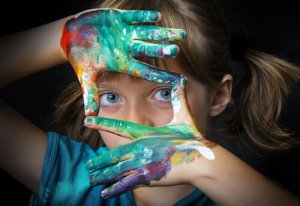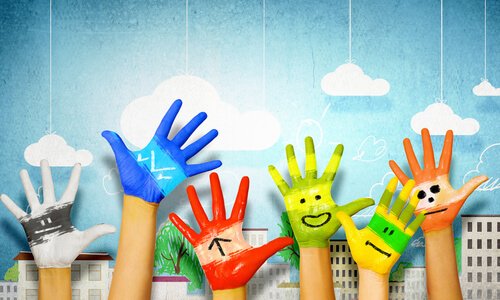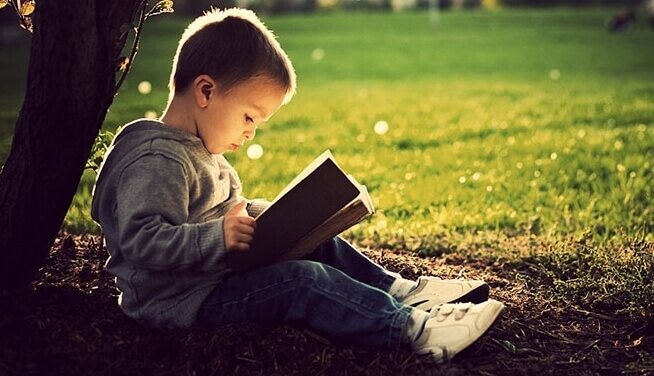The Importance of Art for Child Development

Art plays a more important role in child development than you might think. Artistic activities help children learn other subjects such as reading and math. It also promotes visual, motor and social development.
Using art as a vehicle for expression is enriching because children can use it as a communication tool. Different types of art can reveal children’s thoughts, feelings, and interests.
Lina Idárraga, educator and specialist in children’s visual arts, believes that art allows children to externalize their feelings. Art can also be beneficial for people with disabilities.
Idárraga believes that children communicate ideas and feelings through music, dance, and bodily expression. If adults know how to interpret this language, they’ll be able to better understand a child’s inner world.
Psychologists also believe that art is positive at any age. Nevertheless, early childhood is the ideal stage to teach children all the different artistic disciplines. This is because, when they’re young, their brains are like sponges and easily absorb information.

The importance of art for child development
1. Music
Making music and listening to it helps children develop their intellectual, auditory, sensory, speech, and motor skills.
The musical language is universal and small children who grow up listening to music learn to get along better with other children and relax. Music also stimulates their listening skills and emotional intelligence.
Children’s music is a great teaching tool. The rhymes and repetitions, along with hand motions, are a fun way for kids to boost their vocabulary and better understand the meaning of words.
Singing songs with babies and listening to music with them not only produces changes on a physiological level, but it also encourages a strong emotional bond with the parents.
2. Literature
Educational psychologists specialized in early childhood education agree that it’s difficult to develop a reading habit as an adult. In general, it’s only possible to instill a love of reading in someone during their childhood.
Reading to children is one of the most enriching experiences in the world. It helps them develop cognitive skills such as memory, language, and imagination.
Children discover an incredible world in books. Sharing books and stories with children from a very young age makes them see it as entertainment, not homework. That makes it much easier to incorporate books into their games and free time later on.
Whether children start reading at school or not, this ability has to be reinforced at home for it to fully develop. Also, when you read with your children, you strengthen your bond with them.

3. Drawing and painting
Drawing and painting are two very beneficial activities. They help develop fine motor skills, writing, reading, creativity, and boost self-esteem, among other things.
Not only that, but drawing and painting are excellent ways for children to express their feelings and emotions. And if that weren’t enough, they play a significant role in their personality development and psychological maturity.
If you want to encourage natural creativity, experts recommend offering children free drawing and painting opportunities. That way, the child can give free rein to their imagination and creative expression. Give them materials such as crayons, clay, fingerpaint, and watercolors. Let them experiment on chalkboards, cardboard, canvases, and even walls.
“The painter has the universe in his mind and hands.”
-Leonardo da Vinci-
4. Theater
Getting involved in theater can help children learn important values such as respect and tolerance.
Children’s theater allows children to put themselves in the shoes of characters that are very different from them. Thus, they learn to identify with characters by living their experiences. This helps them be more open-minded and empathetic.
Theater can also open the door to imagination and creativity.
5. Bodily expression
Movement and bodily expression positively impact physical development and healthy growth. Children learn to carry themselves with confidence and maintain their flexibility and natural ability to move, run, and jump. It also helps them with their balance, coordination, and bodily control.
In addition to these physical abilities, bodily expression through movement is beneficial for their emotional intelligence. It also positively benefits their social and creative abilities.

Using the arts to promote child development allows children to express themselves in whatever way they’d like. If you have a little one at home, the best thing you can do for them is to foster their artistic side.
“Imagination does not become great until human beings, given the courage and the strength, use it to create.
-Maria Montessori-
This text is provided for informational purposes only and does not replace consultation with a professional. If in doubt, consult your specialist.








